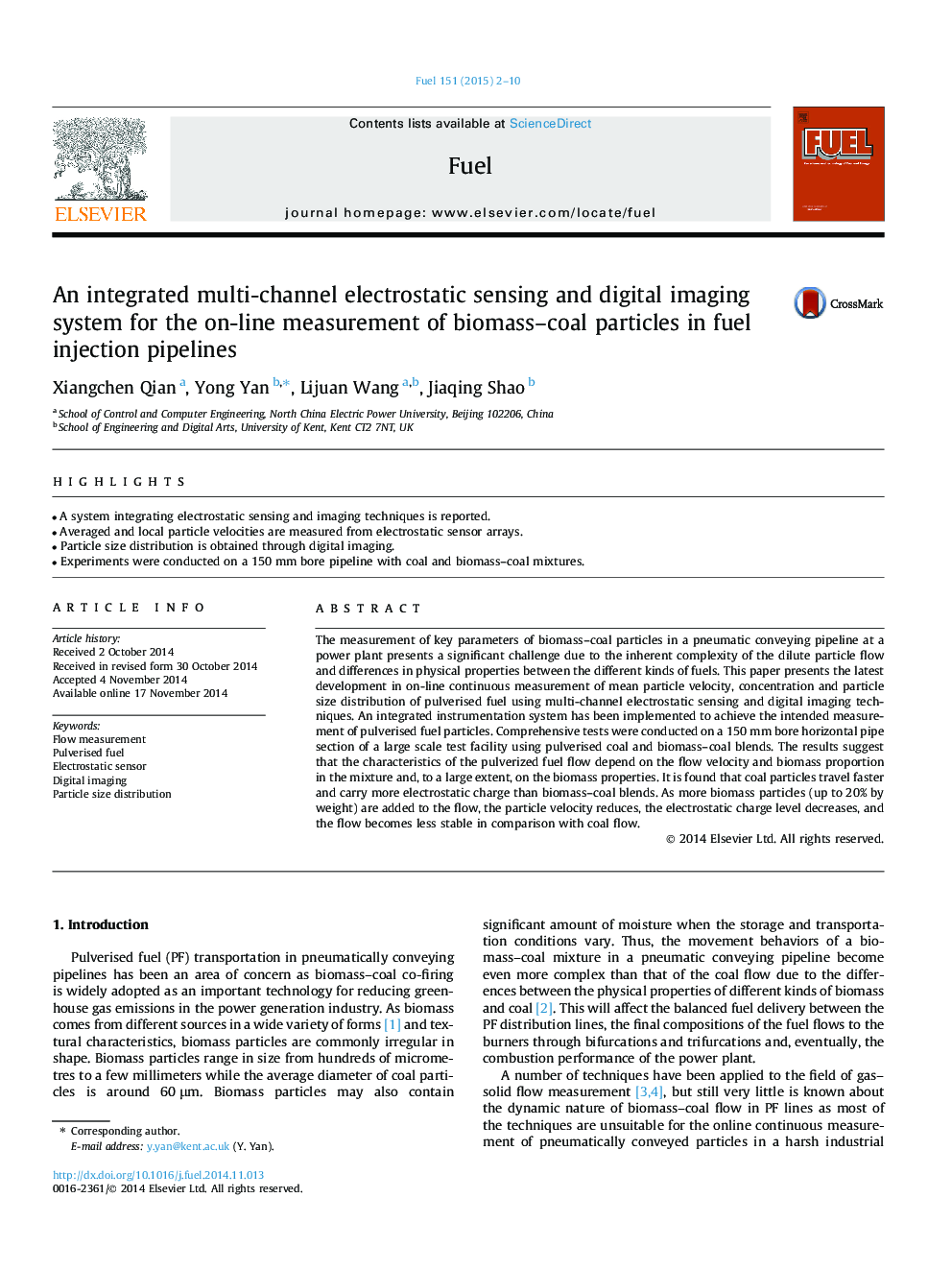| Article ID | Journal | Published Year | Pages | File Type |
|---|---|---|---|---|
| 205608 | Fuel | 2015 | 9 Pages |
•A system integrating electrostatic sensing and imaging techniques is reported.•Averaged and local particle velocities are measured from electrostatic sensor arrays.•Particle size distribution is obtained through digital imaging.•Experiments were conducted on a 150 mm bore pipeline with coal and biomass–coal mixtures.
The measurement of key parameters of biomass–coal particles in a pneumatic conveying pipeline at a power plant presents a significant challenge due to the inherent complexity of the dilute particle flow and differences in physical properties between the different kinds of fuels. This paper presents the latest development in on-line continuous measurement of mean particle velocity, concentration and particle size distribution of pulverised fuel using multi-channel electrostatic sensing and digital imaging techniques. An integrated instrumentation system has been implemented to achieve the intended measurement of pulverised fuel particles. Comprehensive tests were conducted on a 150 mm bore horizontal pipe section of a large scale test facility using pulverised coal and biomass–coal blends. The results suggest that the characteristics of the pulverized fuel flow depend on the flow velocity and biomass proportion in the mixture and, to a large extent, on the biomass properties. It is found that coal particles travel faster and carry more electrostatic charge than biomass–coal blends. As more biomass particles (up to 20% by weight) are added to the flow, the particle velocity reduces, the electrostatic charge level decreases, and the flow becomes less stable in comparison with coal flow.
